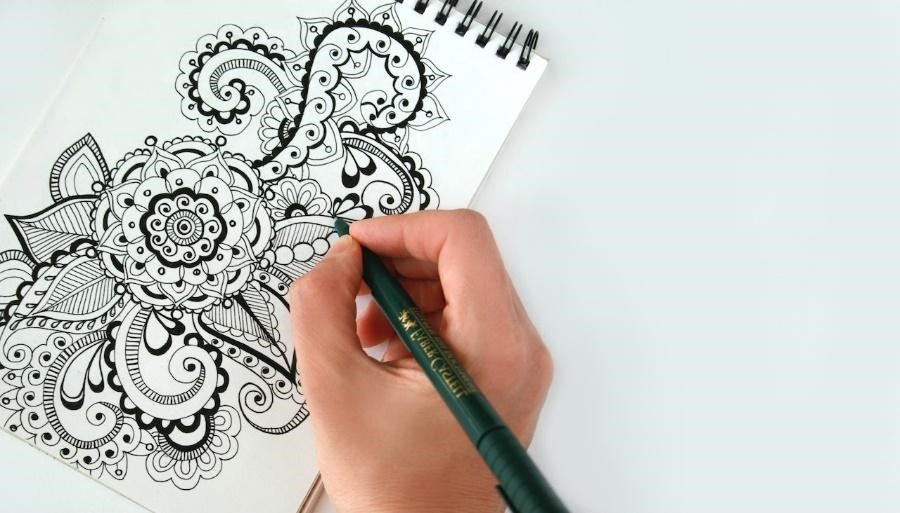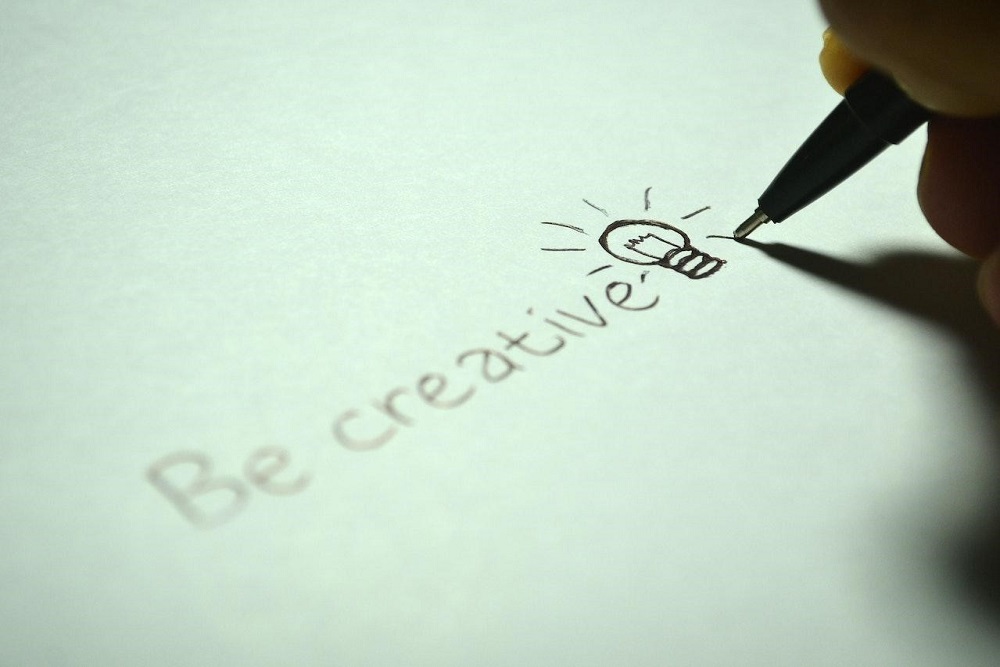If you are creative or simply looking to enhance your creativity, journaling can be useful. It helps you capture and explore your ideas, an essential skill for creativity. It also fosters clarity in your thinking.
This article will explore journaling techniques and strategies to help unlock your imagination and boost your creativity.
Stream of Consciousness Journaling Method
Julia Cameron popularized the stream of consciousness journaling technique in her book The Artist Way. The technique involves writing down whatever comes to your mind without structure or an end goal.
It is an effective way of exploring your thoughts and feelings non-judgmentally. It also helps you to tap into your subconscious mind and download ideas.
To start a stream of consciousness journal therapy session, set the timer for however long you want. It could be 10 minutes, 30 minutes, or up to 1 hour. Put away any distractions and start writing whatever comes to your mind.
It could be the mundane stuff or more introspective such as exploring your fears, limiting beliefs, and the impact of different experiences in your life and mindset. The journaling session could also take a creative turn, such as poetic writing or fiction writing. Whatever comes up, let it flow.
Doodling

Doodling is another excellent strategy and journaling method for letting your creativity flow. Like stream of consciousness journaling, it involves filling doodle pages with whatever comes into your mind. However, in this case, you’re drawing random doodles instead of writing.
There are no specific doodling rules or guidelines, ensuring creative freedom. However, if you’re lost for where to start, choose a theme or color to work with and then let it flow from there. Bring doodling supplies, such as colored pens and markers in different sizes and shades. You may also incorporate stickers too.
Do not worry about creating something perfect. The goal of doodling is to enjoy the process and where it takes you. Doodling has therapeutic effects and can help you to relax and unwind, which is essential for optimal creativity. It can also be an opportunity to unleash your inner creative genius.
Brain Dump
If you are feeling overwhelmed with thoughts, doing a brain dump journaling session can help you to slow down the racing thoughts and to track them. This journal therapy organizes your thoughts and gives you clarity. It gets them on paper for you to see what is taking up your headspace and determine what to do with it.
A brain dump is a free writing session whereby you download all the thoughts in your mind on a blank paper. It could be worries, fears, future plans, pending decisions, uncertainties, unprocessed emotions, goals, tasks, etc.
You can do it as often as you wish, whichever way you like. For example, you may write down to-do lists, bullet points highlighting some ideas you have, questions regarding pending decisions, or random words to express what you feel. A brain dump can bring immediate stress relief and clarity.
Affirmations Journaling
Affirmations journaling involves writing down positive statements about yourself or various aspects of your life to shift your mindset to a more positive outlook. Affirmations journaling can improve your creativity by establishing a mindset that puts you at ease and flow state.
Affirmations also enhance creativity by:
- Overcoming self-limiting beliefs
- Boosting your self-esteem and confidence
- Increasing your self-awareness
- Providing inspiration and motivation
- Developing a growth mindset
You can also write down creativity affirmations to condition your subconscious mind to become more creative. For example:
- I am innately creative
- Ideas flow to me effortlessly
- I embrace my unique ways of creative expression
- It is safe for me to express myself creatively
- My imagination is limitless
- I am divinely inspired, and I am a channel for the infinite intelligence of the world
- I find inspiration in everyday moments
- I prioritize time to nurture my creativity, passions, and ideas
The key to using affirmations effectively is to choose affirmations that resonate with you and suit your goals. When writing or reciting your emotions, reinforce them with emotions and self-belief. Visualize them as the truth.
For best results, use them daily. Track your progress and personalize and adjust them as need be or depending on the results you are getting.
Gratitude Journaling

Gratitude journaling is writing down what you are grateful for, whether people, things, experiences, or personal attributes. The simple technique is powerful in cultivating an optimistic outlook on life and appreciation.
It also builds resilience and can be a source of joy and inspiration. Therefore, it is beneficial to cultivate a daily gratitude journaling practice.
Set aside a few minutes each day. Most people like to do their gratitude practice in the morning to set the tone for their day and in the evening to wind down. However, you can practice gratitude at whatever time you prefer.
Reflect on what you feel grateful for, both small and big, and write it down. Even when facing challenging times, try to find the silver lining. Linger in the appreciation and train your brain to notice the good.
Track Your Ideas
In addition to creative journaling, tracking your ideas can promote creativity. It helps you to capture and organize them for future exploration. You may receive great ideas at odd times, such as in the middle of the night, when showering, at a grocery store, or through a dream.
Having a notebook or a journal with you or nearby ensures you capture them. Even if they do not make sense, keep a record. They may make sense or develop later.
You can track your ideas digitally and physically in different ways. A wide variety of online tools are dedicated to idea management, like Trello, Evernote, and Microsoft One Note.
These digital tools have additional features that make it easy to organize, retrieve, and manage your ideas efficiently. Physically, you can have a journal dedicated to your ideas or create a visual ideas board.
Ultimately, the best method of tracking your ideas is the one that aligns with you and works for your creative process.
Use Journal Prompts
A journal prompt is an effective way to stimulate creativity and explore new ideas, especially if you’re feeling stuck. Identify a variety of journaling prompts that cover different aspects and themes. Include prompts encouraging you to think outside your usual thinking patterns and encourage expressive writing.
Then, set a time to journal. Reflect on the prompt and write down what comes up freely without reservation.
Dig deeper with every prompt and explore different layers, angles, and perspectives. This will broaden your thinking and stimulate new creative connections.
Below are examples of journaling prompts to promote creativity when journal writing:
- If you could master any creative skill, what would it be?
- Visualize yourself as your most creative self
- Write about a time when you felt most inspired and creative
- Write about a time when you experienced a creative block but overcame it
- Write 10 ideas that you think are too far-fetched
- Read different creative quotes. Pick a few that resonate with you most and journal about what they mean to you
- Write a poem on any subject you prefer.
Brainstorm New Ideas
Don’t wait for ideas to come to you; proactively seek them out. This can be achieved through regular brainstorming sessions alone or with others. Therefore, schedule uninterrupted time to generate new ideas and explore existing ones.
By brainstorming regularly, you will realize that you have infinite ideas and breakthrough creativity barriers such as self-censorship and fear of judgment.
Effective brainstorming requires a conducive environment. Therefore, set aside some quiet time without distractions to start a brainstorming journaling session. In the initial stages, focus on quantity rather than quality.
Express as many ideas as possible—even the seemingly unconventional—without holding yourself back. Be on the lookout for triggers that may indicate a connection between ideas or new insights. Actively seek out other people’s ideas too.
Keep an Art Journal
Art journaling is creative journaling that involves using different art forms, such as drawings, paintings, and other artistic elements, to express your thoughts, emotions, and ideas.
It is also a great way to express yourself creatively without the pressure of coming up with finished artwork. You can use different mediums and tools, such as pencils, markers, watercolors, and acrylics.
Conclusion
The key to effectively using journaling to promote creativity is to journal regularly. Julia Cameron recommends journaling daily to keep the flow of ideas open and going. However, decide what works for you or journal as needed.
Identify techniques that work for you and hone down on them. It is recommended to try out as many techniques as possible to establish what works for you. If you are experiencing a creative block, try a technique you have never used before.


